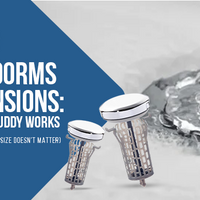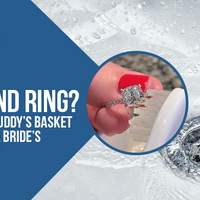Is your bathtub draining slowly, leaving you standing in a puddle? Or maybe you’re upgrading your bathroom fixtures for a fresh new look? You might think this job requires a plumber, but removing a bathtub drain is actually a simple DIY task almost anyone can handle.
With the right tools and a bit of know-how, you can skip the service call and clear your drain in no time. Just be cautious: if the drain is badly corroded, stripped, or refuses to budge, stop and call a professional. Forcing it can crack the tub or damage the pipes, leading to costly repairs.
This guide will walk you through the entire process from identifying your drain type to tackling the most stubborn hardware so you can do it safely and efficiently.
What You'll Need
You don’t have to be a professional plumber to do the job; you just need some tools!
Essential Tools:
1. Drain Wrench
2. Screwdriver
3. Locking Pliers
4. Adjustable Wrench or Tongue-and-Groove Pliers
5. Putty Knife
6. Rag or Towels
7. Bucket
For Reinstallation:
Plumber's Putty or 100% Silicone Caulk
New Drain Assembly
Step 1: Figure Out Your Stopper Type
Your removal method depends entirely on the type of stopper you have.
Toe-Touch: Press down to close, press again to open. To remove, just unscrew the top cylinder counterclockwise.
Push-Pull: Pull up to open, push down to close. Lift and twist the knob counterclockwise until the stopper unscrews.
Lift-and-Turn: This has a small knob that you lift and turn. Check underneath the knob for a tiny set screw. Remove that first, then unscrew the whole stopper.
Trip-Lever: Found on the overflow plates. Remove the overflow plate screws and gently pull out the linkage.
Strainer Screen: Pry this screen up carefully with a flathead screwdriver.
Step 2: Tackle the Drain Flange
Once the stopper is off, you’ll see the drain flange, the metal ring sealed with old plumber’s putty. Follow these directions based on your setup:
If Your Drain Has Crossbars
Insert the drain wrench into the crossbars and attach a second wrench to the top for extra leverage.
Turn counterclockwise with steady pressure to loosen it. Avoid sudden jerks; smooth, firm motion works best and prevents stripping the metal.
If Your Drain Doesn’t Have Crossbars
Use a drain extractor tool instead.
Insert it into the opening, tap it gently with a hammer to secure the grip, and then turn counterclockwise to release the flange.
If the Drain Is Stuck
Apply penetrating oil around the threads and let it sit for 15–30 minutes.
Gently use a hairdryer to warm the area; the heat softens old putty and makes turning easier.
Don’t force it, as excess torque can crack the tub or strip threads.
Step 3: Remove, Clean, and Prep
Once the flange is loose, the hardest part is over!
Remove the Flange: Unscrew it by hand and lift it out.
Clean the Opening: Scrape away all old plumber’s putty, silicone, or gunk from the tub surface using a putty knife.
Wipe Down: Clean the area thoroughly with a rag. A smooth, dry surface ensures a watertight seal when reinstalling.
Step 4: Install and Test
Installation is just the reverse of removal, but remember this key step for sealing the deal:
Apply Sealant: Roll a fresh, thick bead of plumber's putty or silicone and apply it to the underside of the new drain flange.
Screw and Tighten: Hand-tighten, then give it a final gentle quarter-turn with pliers. (Again, don’t overtighten!)
Test for Leaks: Run water for about a minute and check the connection. If no leaks appear underneath, you’re done.
If the drain is stripped, broken off, or simply won’t move after all attempts, call a professional plumber to avoid major damage.
FAQs
What is the most important tool for this job?
The drain wrench is most critical. It's explicitly designed to grip the fragile crossbars inside the drain flange without damaging them.
Why do I need a plumber's putty?
You need plumber's putty or silicone to create a watertight seal between the new metal drain flange and the tub surface. Without this sealant, the water will leak right into the pipe threads.
Can I tighten the drain?
Yes, especially when installing a new drain. However, overtightening the flange can crack a porcelain or fiberglass tub surface, so always aim to tighten it firmly, not forcefully.
What is the P-Trap, and should I remove it?
The P-Trap is the curved, U-shaped pipe under the drain. You do not need to remove it just to swap the drain flange; only remove it when you have a clog that the drain snake can't reach.
What if the drain refuses to move?
If the drain is stripped, broken off, or simply won’t work after using all the recommended methods, call a professional plumber to avoid cracking the tub and making the repair much more expensive.
Conclusion
Removing a bathtub drain isn’t as hard as it looks. Once you identify your stopper type, use the right wrench, and work patiently, you can handle this repair on your own.
You’ve just saved yourself time, money, and a plumbing bill—nice work! For more DIY plumbing tips, explore our recommended drain tools and kits.






